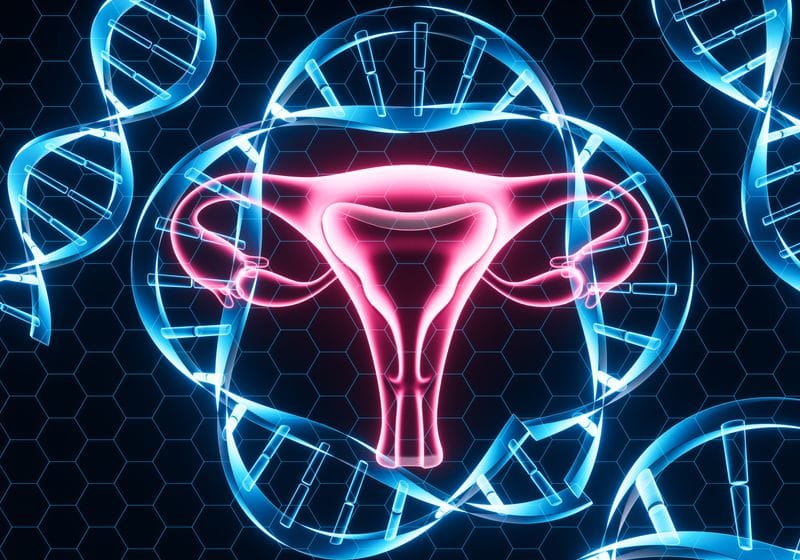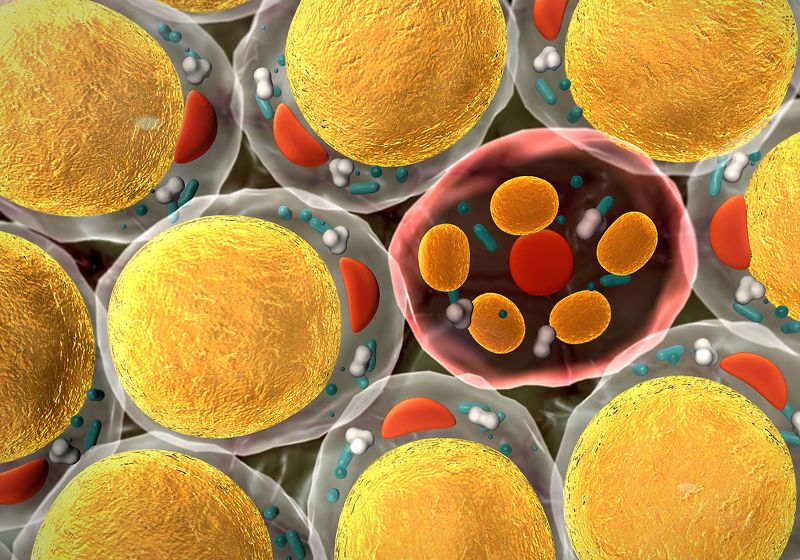Detecting the Cell-Free DNA Fragmentome of Ovarian Cancer

When combined with protein markers, cell-free DNA is a promising biomarker that may help scientists detect ovarian cancer earlier and improve the future of cancer screening.
When combined with protein markers, cell-free DNA is a promising biomarker that may help scientists detect ovarian cancer earlier and improve the future of cancer screening.
Specific and sensitive cancer detection methods have revolutionized outcomes by enabling early diagnosis, but an unmet need remains for ovarian cancer, which often lacks specific symptoms in early-stage disease.1 Researchers seek to develop screening technologies that detect ovarian cancer before symptom onset and enable nonsurgical diagnostics that distinguish between benign and malignant ovarian masses. Biomarker research may yield solutions to both knowledge gaps, opening the door to new and more effective ovarian cancer detection assays and earlier interventions for patients.
Existing protein biomarkers that can be measured in the blood, such as cancer antigen 125 (CA-125) and human epididymis protein 4 (HE4), have shown promise as ovarian cancer indicators, but these biomarkers lack the standalone specificity needed for screening. In recent work published in Cancer Discoverycancer geneticist Victor Velculescu at Johns Hopkins University led an international research effort to detect ovarian cancer through liquid biopsy by combining the power of protein biomarkers, cell-free DNA (cfDNA), and machine learning prediction models.2 They developed an approach that integrates multiple omes to detect ovarian cancer with high performance and specificity.
The cfDNA fragmentome is a genome-wide compendium of cfDNA fragments in circulation, which scientists investigate via sequencing to integrate information on the chromatin, genome, epigenome, and transcriptome of both normal and cancer cells. Velculescu and his team used low coverage whole genome sequencing (WGS) to search for ovarian cancer-specific chromosomal gains and losses in the cfDNA fragmentomes. They also measured serum concentrations of CA-125 and HE4 in the sequenced blood samples and applied their datasets to a machine learning model called DNA evaluation of fragments for early interception (DELFI), which has shown high sensitivity and specificity for identifying other cancer types.
The researchers performed WGS with blood samples from 94 individuals with ovarian cancer, 203 with benign masses, and 182 without any known ovarian lesions. They found an ovarian cancer cfDNA fragmentome that was unique compared to the fragments observed in individuals without cancer or with benign ovarian masses. Applying the DELFI model in this discovery cohort, they examined how well the unique cfDNA fragmentome performed as a classifier for ovarian cancer detection when combined with protein biomarkers (DELFI-Pro). Their model yielded similarly accurate predictions in both symptomatic and asymptomatic patients with ovarian cancer. It also outperformed other genome-wide analyses that only factor in copy number variations or overall median cfDNA fragment lengths. Additionally, DELFI-Pro accurately detected more cases than CA-125 alone at the same specificity threshold.
One reason for the current lack of population-wide ovarian screening tests is the inability to balance the benefit of early detection with the harm of unnecessary procedures and stress for patients. Ovarian cancer’s low prevalence translates to a need for any test to have a stringent specificity cutoff with a high positive predictive value (PPV), or probability that someone with a positive test result has a disease, to justify population-wide screening. The researchers chose a cutoff above 99 percent specificity for DELFI-Pro.
In the discovery cohort, they detected 77 percent of ovarian cancers (72, 69, 87, and 100 percent for stages 1 to 4, respectively). They also validated the DELFI-Pro classifier in a separate cohort that included patients across different ovarian cancer subtypes and individuals without ovarian cancer. They detected 73 percent of ovarian cancers overall using the same threshold score as their discovery cohort, suggesting the cfDNA fragmentome’s usefulness across different populations and demonstrating the robustness and generalizability of DELFI-Pro.
The researchers’ results underscore the benefit of combining cfDNA and proteome measurements to improve ovarian cancer screening and diagnostics. They intend to further validate DELFI-Pro in larger prospective studies to investigate the benefit of population-scale screening with this approach.




